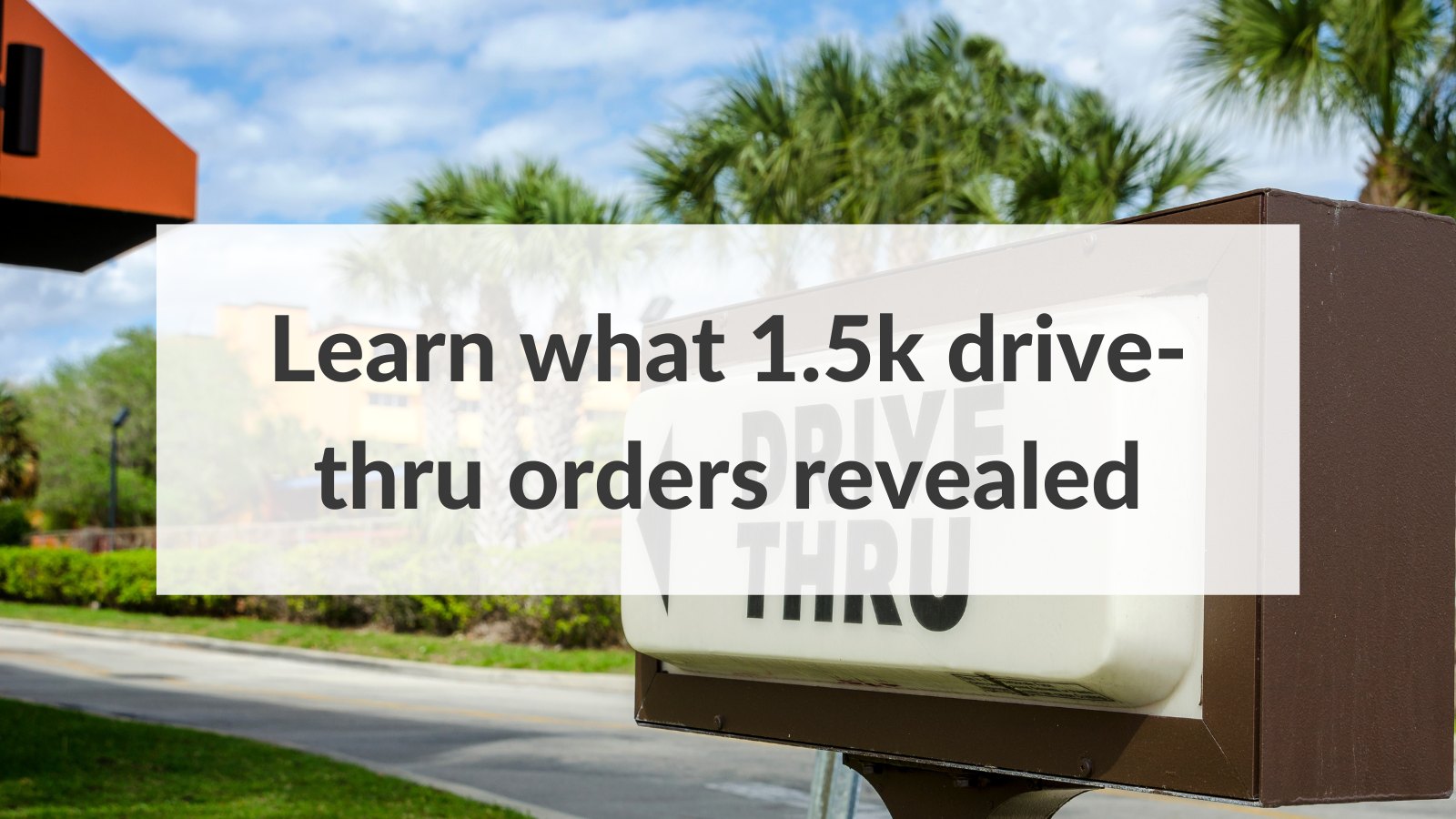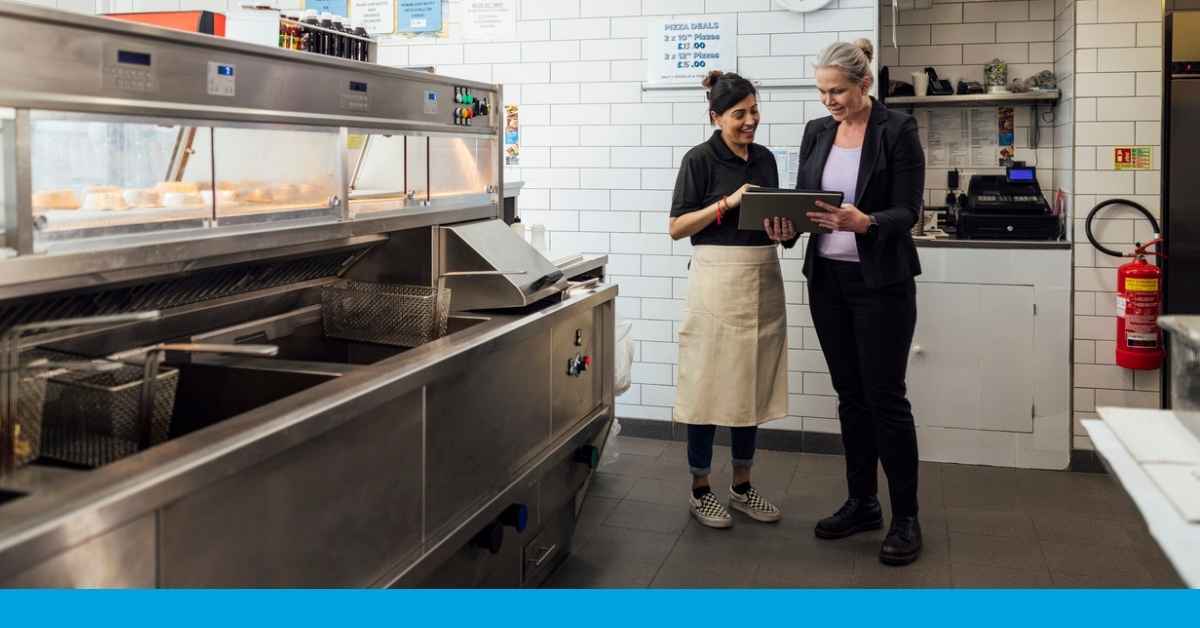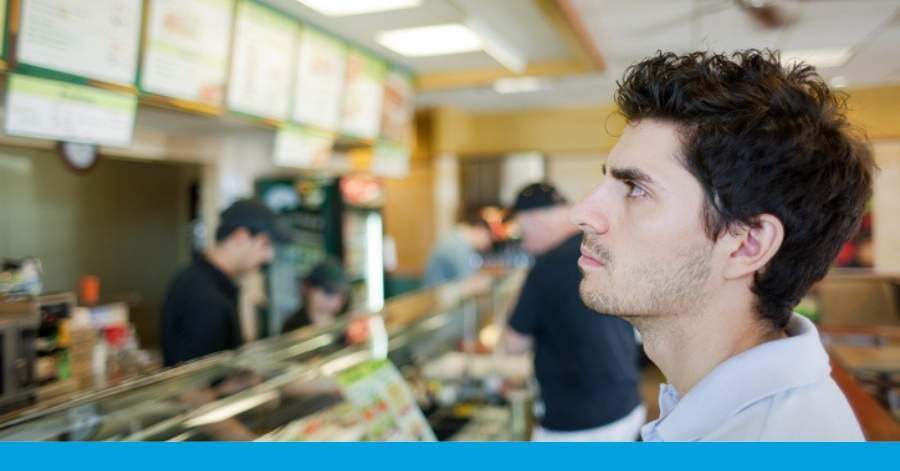Intouch Insight's 2022 Drive-Thru Study
The 2022 Annual Drive-Thru Study is here! This study was first launched 22 years ago and is the leading industry benchmark for drive-thru...
7 min read
 Sarah Beckett
April 04, 2024
Sarah Beckett
April 04, 2024

In the dynamic, competitive restaurant industry, every customer interaction counts. Whether through efficient drive-thru lanes, user-friendly self-service kiosks, or intuitive mobile apps, each touchpoint shapes the guest experience, influencing satisfaction and loyalty.
A recent study highlighted the importance of even the smallest details, like ensuring clear signage at pickup locations, in enhancing customer experience. Customers reported a 64% satisfaction rate when signage was clear, compared to only 52% when it was lacking.
In a landscape where business needs and guest expectations are ever-evolving, how can restaurant leaders consistently deliver exceptional experiences? This is where Key Performance Indicators (KPIs) come into play.
Key Performance Indicators (KPIs) are quantifiable metrics that evaluate performance toward strategic goals and objectives over a given period. In the restaurant industry, customer experience KPIs offer actionable insights into key touchpoints shaping guest experiences, ultimately guiding strategic decision-making and operational improvements.
Consider the speed of service as an example. Findings from the 2023 Annual Drive-Thru Study show that decreasing drive-thru wait times by 5 seconds can lead to financial gains of potentially over $8,000 per location annually.
Analyzing restaurant KPIs like this can lead to data-driven decisions in drive-thru ordering, including initiatives like staff training, streamlining kitchen operations, or even upgrading drive-thru speaker systems for better communication.
Another important aspect is that each restaurant metric is a gateway to in-depth analysis. For example, data on food quality could cover temperature, ingredient quality, taste, presentation, portion size, and freshness. By collecting this data, brands gain insights into the factors influencing customer satisfaction and strategies for improvement.
In quick-service restaurants, discussions about customer experience frequently emphasize restaurant metrics such as speed, accuracy, and friendly service. Yet, the reality within the QSR industry doesn't always meet these high standards.
In a recent study, over 60% of restaurant leaders say order accuracy is mediocre or weak within their shops, highlighting a critical area for enhancements. Operations training and employee accuracy are the largest factors contributing to this statement. (The study encompassed 179 enterprise Fast Casual and QSR brands across 62,000 U.S. locations.)
For many restaurant leaders and franchisors, the challenge lies in narrowing the gap between operational excellence and customer experience. The question is: how can brands enhance operations to ensure consistent experiences across all locations?
Three critical areas present opportunities for improving operational efficiency and the overall guest experience: service quality, customer satisfaction, and food quality.
When thinking about running a successful restaurant, service quality inevitably takes center stage. Here are some essential restaurant KPIs to consider:
Front-of-house operations can significantly impact service time, making staff training a critical component for achieving quick service. Optimizing cashier workflows and POS systems for faster order processing can reduce service time and improve this important KPI.
Optimizing drive-thru layout and investing in technology such as digital menu boards and predictive ordering algorithms help anticipate customer orders and reduce decision time in line.
Data shows that over 20 percent of restaurant customers become annoyed after waiting two minutes to order at the drive-thru window. If the wait is five minutes, that increases to up to 70 percent of customers.
Furthermore, implementing rigorous quality control measures and investing in technology such as kitchen display systems can increase order accuracy rates. Training staff and encouraging open communication with customers to clarify special requests can also improve this KPI.
The more satisfied customers are, the more likely they will return, share their positive experiences, and become long-term, loyal customers. According to a Deloitte survey, the top three elements that created a memorable experience were friendly and authentic service (34%), real-time information (22%), and listening to customer needs (20%).
Here are essential restaurant KPIs linked to customer satisfaction:
Using digital checklists is a great way to ensure nothing is overlooked. Additionally, they allow for real-time updates and tracking of cleaning activities, enabling restaurant managers to monitor progress and address any issues promptly.
Naturally, when consumers choose where to eat, the food will be a crucial component. Here are essential restaurant KPIs to track:
In the 2023 Annual Drive-Thru Study, ‘food quality’ was rated 35% higher when food was received hot than when it was not.
Employee Engagement Key Performance Indicators (KPIs) such as Employee Turnover Rate, Employee Retention Rate, and Employee Satisfaction (ESAT) are closely connected to Customer Experience (CX) KPIs in several ways:
Brands can harness technology to elevate restaurant customer experience KPIs through various strategies:
Implementing user-friendly online ordering systems and delivery platforms allows customers to place orders at their convenience, enhancing order accuracy, speed, and overall customer satisfaction.
According to the 5th Annual State of Digital Report, 77% of surveyed brands reported digital sales growth in 2023. This allows brands to improve profitability and gather valuable behavioral data to create a seamless experience across channels.
Online ordering and delivery platforms provide valuable data regarding order accuracy and delivery times. By tracking restaurant metrics such as order accuracy rates and average delivery times, restaurants can measure their performance in meeting customer expectations for timely and error-free delivery.
Analyzing this data allows for adjustments in operational processes to improve accuracy and reduce delivery times, ultimately enhancing the customer experience.
An intuitive, great-looking online menu plays a crucial role in customer experience. In fact, studies show that satisfaction with the ordering experience was 61% higher when consumers found it was easy to add an item to their cart.
Point-of-sale (POS) Systems not only facilitate checkout but capture essential transactional data such as order frequency, average order value, menu item profitability, and popular menu items.
Analyzing this data provides insights into customer preferences, enabling restaurants to tailor their offerings to meet specific demands. For example, identifying popular items allows for strategic menu placement or promotional campaigns to improve financial performance.
POS systems also track key metrics related to order speed, providing insights into operational efficiency. By monitoring these metrics, restaurants can identify areas for improvement in kitchen workflows or service processes to enhance service speed and reduce wait times.
Additionally, POS systems streamline the ordering process, minimizing errors and wait times. Leveraging other functionalities such as integration with loyalty programs and customer feedback mechanisms, such as surveys, further enhances the capabilities of these systems.
Utilizing survey tools such as online surveys or feedback kiosks empowers restaurants to gather real-time insights into customer satisfaction levels. These tools enable brands to collect feedback on various aspects, including food quality, customer service, friendliness, and more. Additionally, integrating Net Promoter Score (NPS) surveys allows restaurants to assess customer loyalty and the likelihood of recommending the establishment to others.
Tracking NPS over time offers valuable insights into overall customer sentiment and brand advocacy. Improvements in NPS scores lead to enhanced customer experience and increased loyalty, vital for long-term business success.
Customer Experience (CX) Platforms are centralized hubs integrate data from various CX initiatives, including mystery shopping programs, surveys, operational audits, and digital checklists across all locations.
By consolidating data from all these tools into a single interface, brands gain a comprehensive view of customer experience, preferences, and behavior. This unified approach streamlines data analysis and reporting, enabling decision-makers to identify trends, patterns, and actionable insights more efficiently, leading to informed decision-making.
Furthermore, CX platforms facilitate performance benchmarking across locations. By comparing customer satisfaction scores, wait times, and order accuracy rates, restaurant leaders can identify top-performing locations, pinpoint areas for improvement, and implement best practices consistently across the organization.
CX Key Performance Indicators (KPIs) cannot be overstated in the restaurant industry. From service speed to food quality, these indicators provide invaluable insights into guest satisfaction, operational efficiency, and overall business success.
Understanding how each relates to overall Customer Experience (CX) is critical, no matter which KPIs you decide to measure. By leveraging technology and implementing strategies such as a centralized CX platform, restaurant leaders can elevate KPI measurement efforts, implement operational enhancements, cultivate loyalty, and drive continuous business growth.

The 2022 Annual Drive-Thru Study is here! This study was first launched 22 years ago and is the leading industry benchmark for drive-thru...

From reducing costs to improving customer retention, efficient restaurant operations can significantly impact profitability.

Imagine this: Peter is hungry and in a hurry for something satisfying to eat. He pulls into a drive-thru, but the menu is cluttered, the line is...